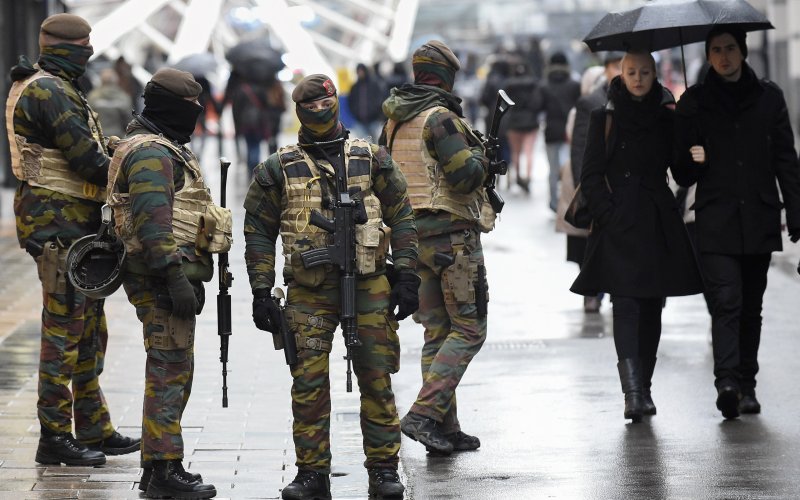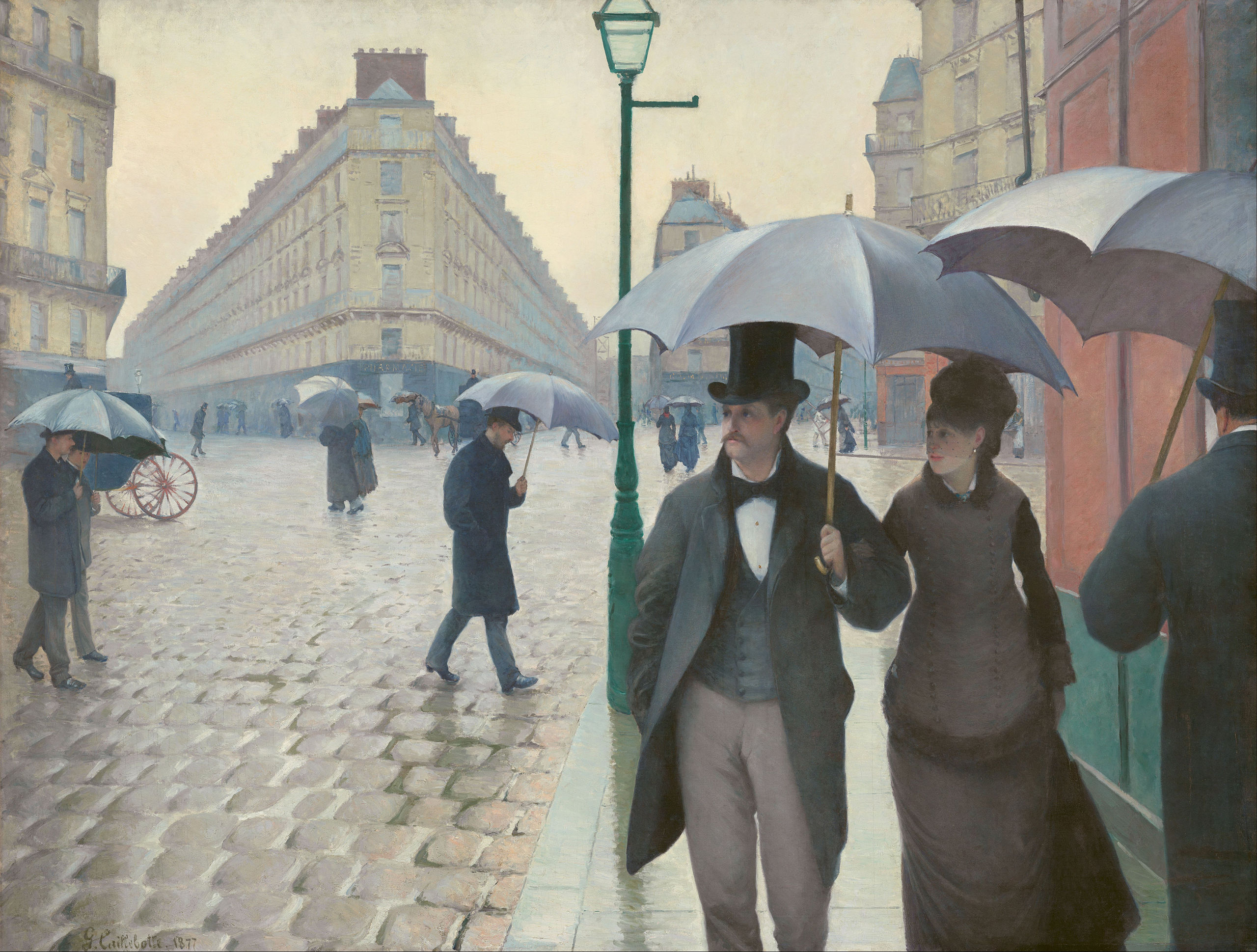The caption pointed to the soldiers on the Rue Neuve in Brussels, but what about the two figures on the right?
What about them? A couple walks under an umbrella; this is not news. No, it is not, but it does call to mind another European rainy day scene:
Gustave Caillebotte’s painting “Paris Street, Rainy Day” is one of the more remarkable depictions of the bourgeois civil society that made Paris the center of European modernity during the 19th century. The street scene is muted emotionally by the rain that has softened the brick surfaces of the city, while the couple’s comfortable domesticity under their umbrella becomes a small enclave of intimacy within the public space. Their easy entrainment contrasts with the empty spaces and isolated strangers behind them, and with the possible collision involving the stranger approaching them. He will adjust, of course, as will they, and so we can imagine a small ripple in the ongoing flow of urban civility–something to talk about when the couple is sitting at a cafe, but nothing more than that. And certainly not a terrorist attack.
I doubt that the photographer was thinking of Caillebotte’s work when snapping the photo in Brussels, but the connection in there in several ways. The contemporary couple could be inserted into the 1877 painting without much difficulty: they, too, are comfortably entrained while walking on the street on a rainy day, dressed for going out in public, enclosed in their private space beneath the umbrella, and contrasted with the strangers behind them and with the possible disturbance of an approaching figure who might step into their path. Although not in Paris, they are in a nearby European capital, and the photo is being taken because of what happened in Paris.
There also are differences, of course. Now she is holding the umbrella, which might be a small sign of gender equity. The scene behind them is a bit more crowded, and the dress codes have loosened up in the intervening years. Oh, yes, and there are four armed soldiers dominating the pictorial space. That’s not the Paris of 1877. We might want to call it the new normal.
If terrorists opened fire, you’d be damn glad those soldiers were there. Short of that, however, their presence is visually jarring, and should be seen as such. Masked, porcine, with multiple appendages, partially immobilized by their gear, suited for lethal conflict rather than civil association, they are visible proof that the civil society represented by the European city has been seriously disrupted.
Just as painting captured important features of 19th century modernity, photography may reveal characteristic truths about modern civil society in the 21st century. No photograph tells the whole story, and no painting does either. We also should acknowledge that 19th century Paris was aligned with an extensive expansion of European imperialism, and that the public life of the era was still gendered, raced, heteronormative, and otherwise well short of its Enlightenment promises. In like manner, more than one nation ought to admit that those attacking 21st century Paris are the issue of imperial histories, not least the Western entanglement with Saudi Arabia and an invasion and botched occupation of Iraq. Even so, both the painting and the photograph represent something essential about a decent civil society.
In the photograph, the couple on the right seems about to be edged out of the picture. Perhaps they will pass through without incident, but there may not be room next time. Instead of the openness evident in the painting, the civic space has become clotted with military force. If the enduring legacy of the attacks is to make a “security umbrella” an ever larger and more prominent part of urban experience, we may find that we have destroyed the city in the name of saving it.
Photograph by John Thys/AFP/Getty Images.
Cross-posted at Reading the Pictures.


“We also should acknowledge that 19th century Paris was aligned with an extensive expansion of European imperialism, and that the public life of the era was still gendered, raced, heteronormative, and otherwise well short of its Enlightenment promises.”
Also that in 1871, something like 20,000 Parisians were killed during the suppression of the Commune. Those cobblestones have blood on them.